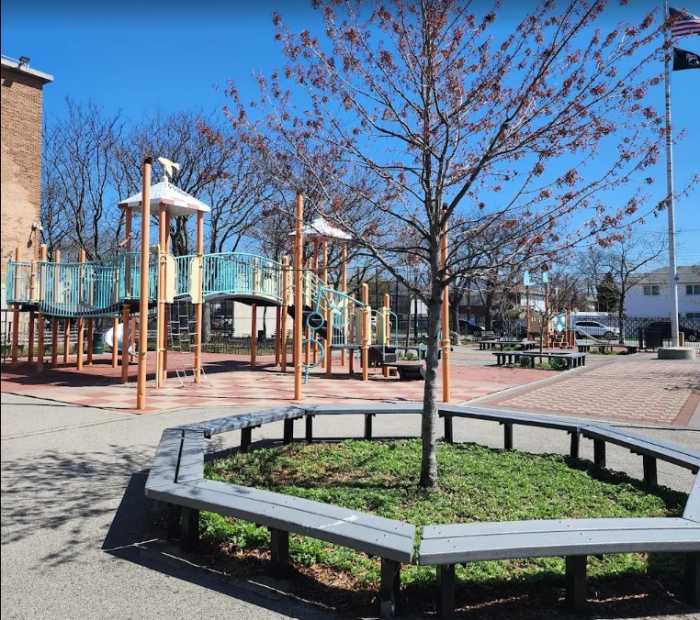By Joan Brown Wettingfeld
It is to the famed American caricaturist Thomas Nast that we owe the image of the fat, jolly, be-whiskered Santa Claus. Until Claus’ depiction drawn in the mid-19th century by Nash, it was the figure known as St. Nicholas, a fourth-century bishop of Asia Minor about whom there were many legends of works of wonder, who held the center stage during what became our present-day Christmastime. In the Netherlands particularly, his feast on Dec. 6, was the holiday associated with the giving of gifts to children. The custom was adopted from the Dutch by the English, he was renamed “Santa Claus” and his day was moved to the English gift day, Christmas. The Dutch colonists in Manhattan brought the custom to our shores.
Nast was brought to this country from Germany when he was 6 years old. He attended art school for a short time but was forced to leave at the age of 15 to help support his family. Fortunately he was able to obtain an illustrator’s job with the famed Frank Leslie’s Illustrated Newspaper, which started him on his way to recognition.
Nast later worked for the influential Harper’s Weekly, founded by James Harper (born in Queens). From then on, Harper’s Weekly became a public gallery for Nast’s work. Using his art form of cartooning and caricature, he dominated the field during the Civil War and the Reconstruction years.
In the quarter of a century following the close of the war, his drawings reflected every important social and political issue as he chronicled America’s history of the time. It was Nast who created the elephant, the donkey and the tiger as symbols of the Republican Party, the Democratic Party and Tammany Hall, respectively.
In 1870 to 1871 his skill in caricature helped to rid the city of New York of the corrupt regime of “Boss Tweed.” At one time William Marcy Tweed, the boss of the Tammany Hall political organization, was among the famous patrons of Garrison’s Hotel, located at Bell Avenue and Willets Point, where he was known to hold important political conclaves. Formerly Tony Miller’s Hotel, Garrison’s was the resort of choice for all prominent politicians and the sporting fraternity, who were described as coming by way of side-wheel steamboats, tally-hos and handsome rigs, and especially for their famous clambakes, with the clams taken from Little Neck Bay.
For years a legend has persisted that when his infamy led to a trial and imprisonment, Tweed escaped from another famous old Bayside Hotel, Crocheron House, which overlooked Little Neck Bay at the foot of Crocheron Avenue. But there appears to be little if any evidence that this is true. Later biographers of Tweed relate a number of versions of his escape.
During his imprisonment, Tweed was allowed outings at regular intervals. On Dec. 4, 1875, Tweed, his son, the warden and a keeper went for a drive and at dusk returned to the home of his son, William, near 60th Street and Madison Avenue. Tweed excused himself to go upstairs to speak with his wife. A few minutes later the warden asked young Tweed to escort his father downstairs. After a short pause William returned to announce his father was not to be found.
Tweed’s escape was well-planned. A carriage was awaiting him at the back door, but details from then on are sketchy. It seems he rowed across the Hudson to hide in the flats of New Jersey. He then went into hiding on Staten Island where a small coastal craft took him to Florida. A $10,000 reward was offered for his recapture, but from Florida he went to Cuba, where he was arrested because he had no visa. Again he was pardoned and allowed to sail for Spain.
Nast’s cartoon caused his downfall. It depicted Tweed in a convict’s uniform addressing two little street urchins and was entitled “Tweedle-le-de and Tilden-dum.” Under the caption, Tweed was saying: “If all the people want is to have somebody arrested, I’ll have you two plunderers convicted. You will be allowed to escape. Nobody will be hurt, and then (presidential candidate Samuel) Tilden will go to the White House and I to Albany as governor.” A sign on the wall behind states: “It takes a thief or one who has been associated with thieves to catch a thief.”
The cartoon hurt Tilden’ s campaign. Though he won a popular majority, he lost in the electoral college and Rutherford B. Hayes became president.
The cartoon proved a disaster for Tweed as well. The Spanish authorities had been alerted that Tweed was on his way, but they had no photo to identify him. They misinterpreted the cartoon, believing him to be depicted as a kidnapper, and when he arrived in Vigo he was promptly arrested. The U.S.S. Franklin was quickly dispatched and brought Tweed back to New York, where he landed in the Ludlow Street jail.
The heart condition and diabetes that plagued him were worsened by his stay at Ludlow and on April 11, 1878 he died. A modest funeral followed. Though the family had requested that when the funeral procession passed City Hall the flag there be lowered to half mast, that final request was denied.
Nast continued creating illustrations of such familiar scenes as Santa’s Workshop at the North Pole, Santa atop a chimney, children hanging their stockings by the fireplace, Santa in his sleigh or opening his mail and recording children’s behavior, as well as visions of little ones watching at night to catch a glimpse of him. All of these vignettes have influenced our visions of Christmas for more than a century and continue to be treasured.
Nast’s political cartoons were instrumental in destroying the New York City political machine Tammany Hall and its political boss Tweed. Among the packet of cartoons Nast used effectively was on entitled “A Group of Vultures Waiting for the Storm to Blow Over — Let Us Prey.” It signaled the effectiveness of the cartoon as a political tool.
Joan Brown Wettingfeld is historian and free-lance writer.




































